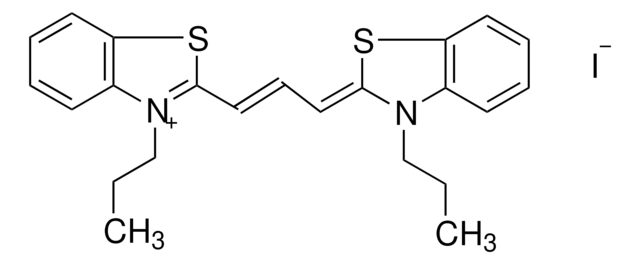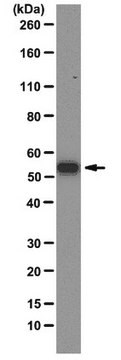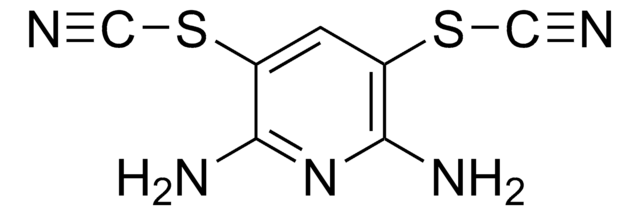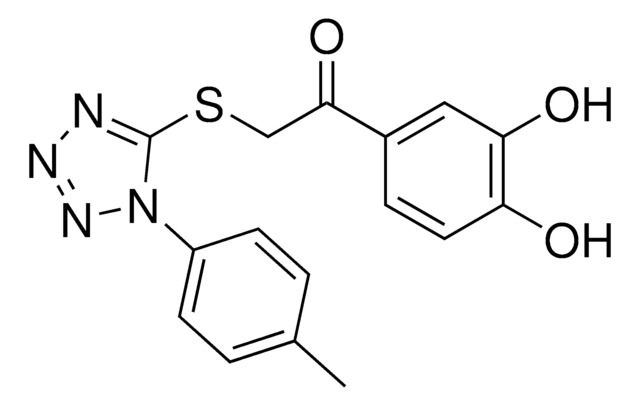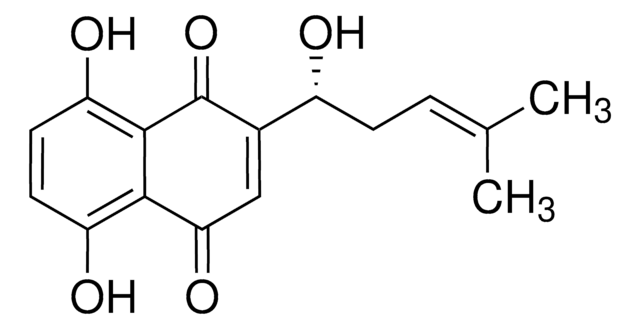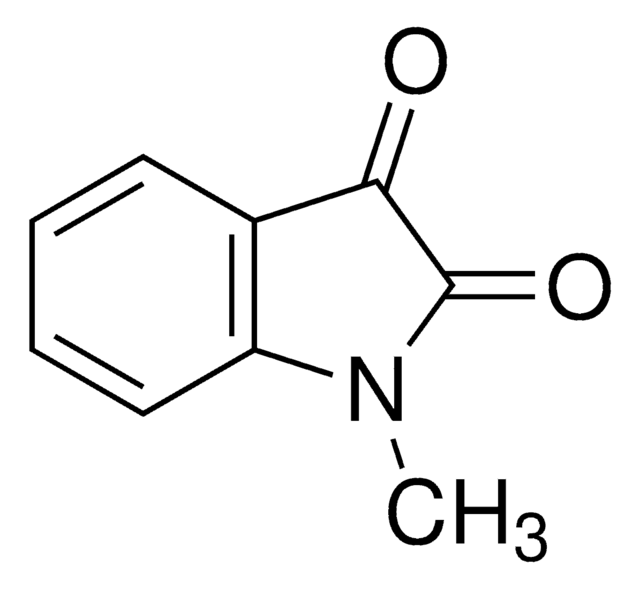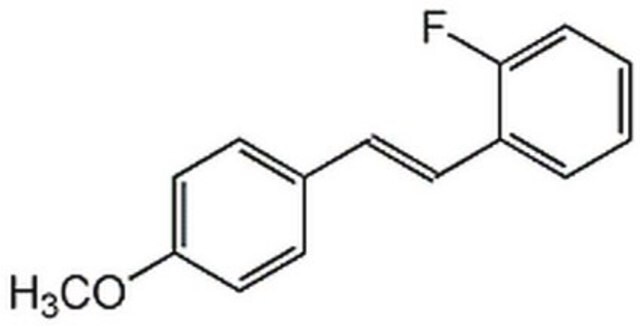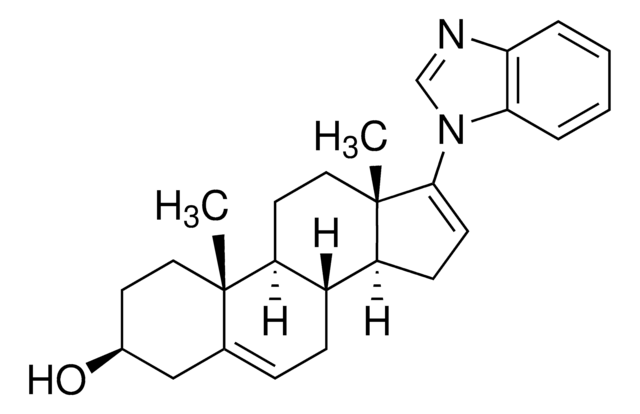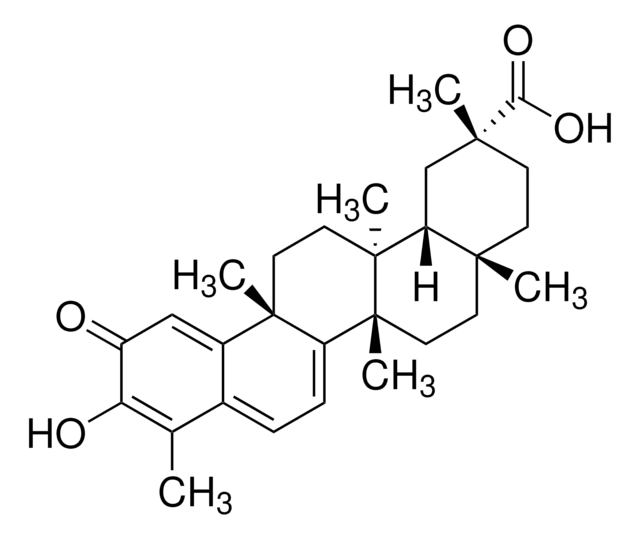SML0770
P5091
≥98% (HPLC)
Sinonimo/i:
1-[5-[(2,3-Dichlorophenyl)thio]-4-nitro-2-thienyl]-ethanone; 1-[5-(2,3-dichlorophenyl)sulfanyl-4-nitro-2-thienyl]ethanone
About This Item
Prodotti consigliati
Livello qualitativo
Saggio
≥98% (HPLC)
Stato
powder
Colore
light yellow to dark yellow
Solubilità
DMSO: 10 mg/mL, clear
Temperatura di conservazione
2-8°C
InChI
1S/C12H7Cl2NO3S2/c1-6(16)10-5-8(15(17)18)12(20-10)19-9-4-2-3-7(13)11(9)14/h2-5H,1H3
LKZLGMAAKNEGCH-UHFFFAOYSA-N
Applicazioni
- as a ubiquitin specific peptidase 47 (USP47) inhibitor in 3-(4,5-dimethylthiazol-2-yl)-2,5-diphenyltetrazolium bromide (MTT) assay to evaluate the cellular viability of MCF-10A cells
- as a USP7 inhibitor to study the regulatory role for USP7 on inflammasome activation
- as USP7 inhibitor in drug susceptibility assays to study its effect on bone marrow−resident tumor cells (BMRTCs)/ circulating tumor cells (CTCs)
Azioni biochim/fisiol
Avvertenze
Danger
Indicazioni di pericolo
Consigli di prudenza
Classi di pericolo
Acute Tox. 3 Oral - Aquatic Chronic 4
Codice della classe di stoccaggio
6.1C - Combustible acute toxic Cat.3 / toxic compounds or compounds which causing chronic effects
Classe di pericolosità dell'acqua (WGK)
WGK 3
Punto d’infiammabilità (°F)
Not applicable
Punto d’infiammabilità (°C)
Not applicable
Scegli una delle versioni più recenti:
Certificati d'analisi (COA)
Non trovi la versione di tuo interesse?
Se hai bisogno di una versione specifica, puoi cercare il certificato tramite il numero di lotto.
Possiedi già questo prodotto?
I documenti relativi ai prodotti acquistati recentemente sono disponibili nell’Archivio dei documenti.
Il team dei nostri ricercatori vanta grande esperienza in tutte le aree della ricerca quali Life Science, scienza dei materiali, sintesi chimica, cromatografia, discipline analitiche, ecc..
Contatta l'Assistenza Tecnica.